- Capabilities
-

CNC Machining
Tight tolerance and 20+ finishes 3, 4 , 5 axis, as fast as 2 days -

Sheet Metal Fabrication
High-precision, on-demand sheet metal cutting and bending. -

3D Printing
SLA, SLS,MJF,SLM, FDM 3d printing with post treatment. -

Vacuum Casting
Production quality parts without the tooling investment.
-
- Solutions

Rapid Prototyping
Fastest lead time of high-quality prototypes at minimal cost.

Low Volume Production
From one-off prototyping to low-volume production.

Mechanical Assembly
Custom assembly for project-specific needs.

Custom Package
Ready to help you prompt your brand.
- Sources

Materials
Select from 100 more types of metals and plastics.

Finishes
Select from 20 more types of surface fishes.

Industries
Providing precision machining and manufacturing solutions.

Cases
How we assist our clients in bringing their projects to fruition.
- Company

Quality Assurance
Consistent quality, every time.

About Us
Your go-to manufacturer for custom parts.

Newsroom
Learn updated news about ECOREPRAP.
CNC machining for rapid prototyping
(definition, advantages, processes,materials and tips)
Updated: May 05, 2024
Table of Contents
- 1. What is prototyping?
- 2. Why Choose CNC Machining for Rapid Prototyping?
- 3. Limitations of Rapid CNC Machined Prototypes
- 4. What are the applications of CNC machining prototyping?
- 5. How to make CNC machining prototypes?
- 6. What materials are used in CNC prototype?
- 7. Types Of CNC machines used for prototyping
- 8. Which is better for prototyping? CNC machining VS 3D printing?
- 9. 5 Tips for making prototypes via CNC machining
- 10. How to choose a reliable prototype CNC machining manufacturers?
We usually use CNC machining and 3d printing to make rapid prototypes. CNC machining can manufacture complicated parts with a tight tolerance in only days.
There are a lot of CNC machining materials for prototype manufacturing, metals like aluminum, stainless steel, alloy steel, plastics like acrylic, Delrin, polycarbonate, and more.
This blog will provide information about rapid prototype history, CNC machining methods, materials, and tips.

What is prototyping?
Prototyping is the process of creating a product model, which will be tested worldwide and serve as the foundation for the final product’s appearance.
Prototype design is a stage in product development where designs are validated and refined, which can validate and substantiate the design. The aim is to be able to touch, feel, test, and demonstrate a product before manufacturing it, either in mass production or from expensive materials. We want to make sure that our design fits our needs and application.
Prototypes are demonstrated on the trade shows or to investors. Making prototypes can test the validity of an engineer’s idea and pass specific tests. Prototypes can evaluate what needs to be improved and get feedback from the market or customers. In general, the purpose of prototyping can be classified into three aspects. One is what the product looks like, two is what the product acts like, and three is the product Concepts test.
What is traditional prototyping?
In the past, people use die casting, injection molding, and sand casting for prototyping, they are also called traditional prototyping methods.
Die casting prototyping involves creating precision metal castings by injecting molten metal into pre-designed mold cavities. Die casting can produce complex shape prototypes with high precision and repeatability.
Injection molding prototyping is the process of injecting molten plastic into a mold cavity to form a desired shape. It can achieve high productivity, good surface finish, and the ability to create complex designs. Tooling costs and lead times for making molds are usually high.
Sand casting prototyping is a method of making prototypes for metal parts. The desired shape is first created on a template; then, wet sand is used around it to encase it. The template is removed, leaving a cavity that corresponds to its shape. Sand casting prototypes typically manufacture small to medium-sized metal parts at a low cost and with short production cycles.
Traditional prototyping methods are usually expensive. The tooling cost, setup, and production can be significant, especially considering that potential changes are required during the prototyping phase.
Some people can’t tell the difference between prototypes and mock-ups. A mockup is a detailed representation of your design, clearly showing how the final product will appear. A prototype is an initial product model emphasizing functionality, providing stakeholders with a glimpse of the final version. A mock-up is primarily used to show design, while a prototype can show both design and functionality.
What is rapid prototyping?
Unlike traditional prototyping, rapid prototyping technology, RP, for short, uses a computer to create 3D models, then produces prototypes via CNC machine or prints the prototype via 3d printers. 3D printing prototyping and CNC prototyping are the most commonly used for rapid prototyping.
3D printing rapid prototyping is cheap and fast, for small and simple design, it can only take minutes to get the prototype. CNC rapid prototyping can get precision parts with tight tolerance and has many material choices.
Below is a basic introduction of 3d printing technology to create rapid prototypes.
Stereolithography (SLA) 3d printing uses an ultraviolet laser to selectively solidify photosensitive resin layer by layer, gradually forming the desired object shape.
Selective Laser Sintering (SLS) prototyping uses a laser beam to selectively sinter powder material (typically plastic or metal powder) layer by layer, gradually building the required object shape.
SLM (Selective Laser Melting) prototyping is an additive manufacturing technique used to create prototypes of metal parts. During the SLM process, a laser beam is directed layer by layer onto a metal powder, causing it to melt and solidify locally, thus gradually building up the desired object shape. There a lot of materials for SLM prototyping for example, stainless steel, titanium alloys, aluminum alloys, and more.
FDM (Fused Deposition Modeling) prototyping is a common rapid prototyping technique that uses hot-melted plastic filaments that are deposited and built up layer by layer through a nozzle to construct the desired object shape gradually.
MJF (Multi Jet Fusion) prototyping is an advanced additive manufacturing technology. In this technique, nozzles spray layers of powdered material onto a build platform, then heated and precisely controlled to melt the powder to form the desired object shape.
By CNC rapid prototyping, the operator puts computer-generated design files into CNC machines, controlling the movement of the cutting tool and enabling precise cutting and machining of raw materials to create the desired object shape. CNC prototype machining is a good choice because it can quickly make a prototype.
CNC rapid prototyping is one type of rapid prototyping that is very commonly used for precise and complicated parts. This is the difference between RP and CNC.
What are rapid prototyping’s advantages over traditional prototyping?
Compared with traditional prototyping, rapid prototyping has many advantages. The first is cost-saving without tooling investment. Second is time efficiency, it only takes minutes to make simple prototypes via 3d printings, which can not be achieved by traditional prototyping. Third, rapid prototyping provides multi-material selections.
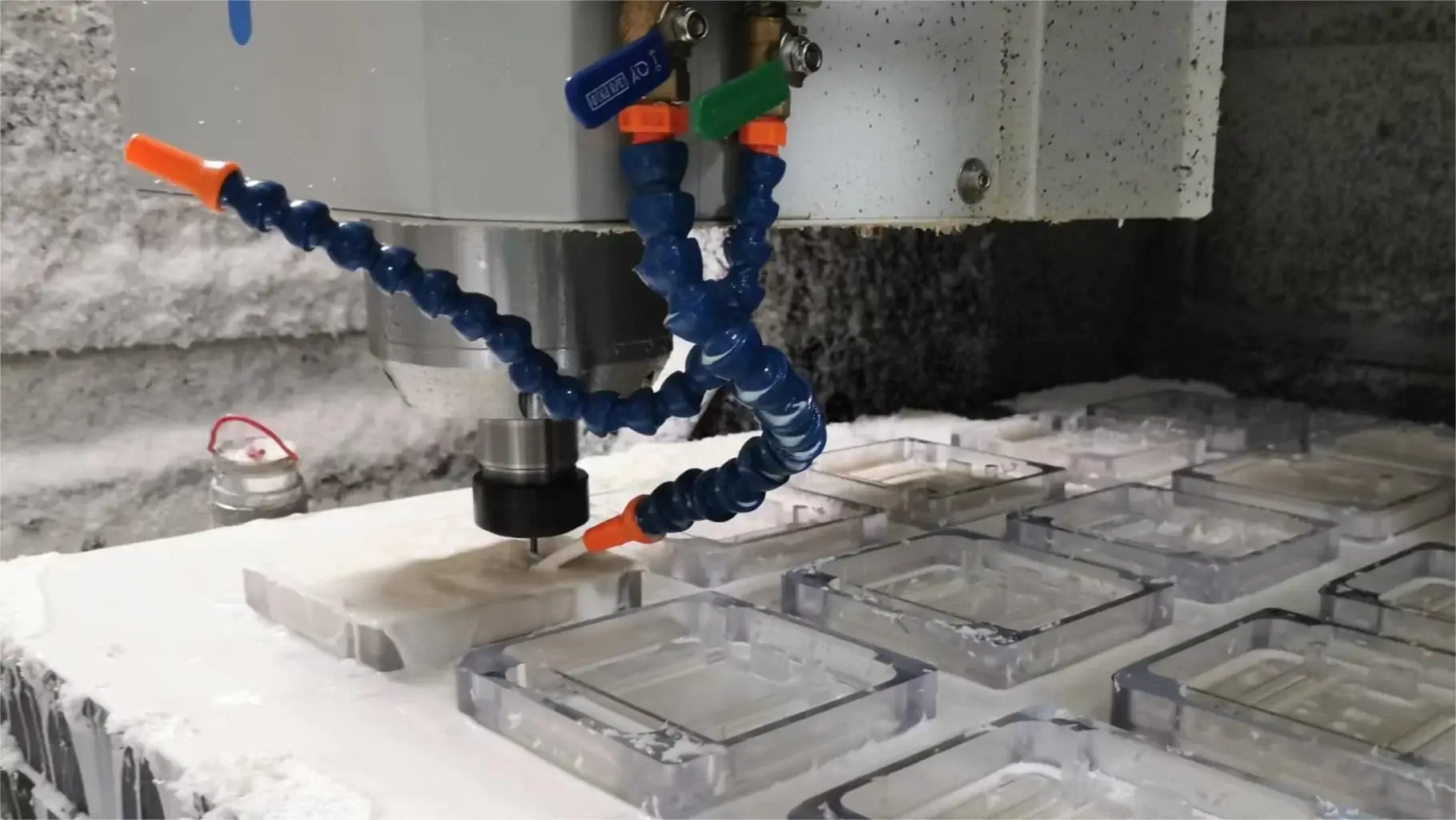
Why Choose CNC Machining for Rapid Prototyping?
As mentioned above, CNC rapid prototyping is fabricating or creating a part from a CAD or 3D model using a computer-controlled cutting tool.
As one of the most effective methods for rapid prototyping, CNC machining enables high-quality prototypes in a short turnaround time. Below are why CNC machining is your preferred technique for creating rapid prototypes.
CNC machining offers faster prototype manufacturing speed.
From setup to execution, CNC machines convert 3D CAD/CAM models into G-code software, starting milling or turning and producing final parts within hours. The automation of CNC machining also means minimal downtime during the production process.
No need for mold investment for CNC machining.
Tradition prototype methods, like die casting and injection molding, need steel-made tools. The making of these molds takes weeks, depending on the design complexity. Heat treatment is always also required for these molds. However, CNC machining does not need it. The machining process only requires CAD/CAM design, computer software, and some CNC cutting machines, making CNC machining faster, more cost-effective, and more precise for rapid prototyping.
CNC machining offers high precision and dimensional consistency in prototypes.
In modern CNC machining centers, CNC machines the most effective method for achieving the highest precision, with tolerances around 0.05mm, unmatched by any other manufacturing method in the industry.
CNC machined parts are with high precision and repeatability.
The prototypes produced by cnc machining rapid prototyping are nearly identical in appearance and function. CNC precision is highly accurate and applicable to almost all commercial applications.
For prototyping CNC machined parts, we can do different surface treatments to improve the surface finishes and smoothness, making them suitable for scientific and engineering parts with tight tolerances.
Rapid prototyping CNC machining makes complex geometries achievable.
Advanced CNC machines like 5-axis CNC machining centers and CNC milling-turning centers can produce prototypes with complex designs. They can easily handle 3D models and complicated details, making them highly valuable for aerospace, automotive, and medical equipment industries.
CNC machining offers convenient modification capabilities.
CNC machining centers control CNC machine tool operations by modifying G-code. We can change the prototype design simply by adjusting the G-code. This is a significant advantage compared to traditional manufacturing and prototyping techniques, where modifications may require new or expensive changes to existing molds.
CNC machining can provide larger product sizes potentials.
CNC horizontal machining centers and some large CNC router can process parts exceeding one meter in size.
CNC machining provides a diversity of materials.
In general, CNC machines can cut and mill various production materials. We can use the same design to produce prototypes in different materials and evaluate which material’s mechanical, functional, and physical properties are best suited for their final purpose. With slight modifications to feed parameters and operating speeds, the same design can be run on multiple materials, resulting in perfect prototypes and ideal products.
Above are the 8 reasons why we use CNC for rapid prototypes.
At ECOREPRAP, we once served a client in the sensor industry who used four different materials – PEI, PA+30%GF, PP+30%GF, and Nylon – to make the same housing. Materials commonly used in CNC prototype production are divided into plastics and metals. We will talk more about prototyping materials later.
CNC rapid prototyping can benefit any industry, whether it’s aerospace, automotive, construction, aerospace, architecture, medical, or other fields requiring precision and accuracy in finished products.
For many low-volume production projects, CNC machining is also a good option. Depending on the geometry and material, CNC machining may be an excellent choice whether a customer needs 100 or 1000 units, as it is an “on-demand manufacturing ” method that eliminates the need for investing in tooling and molds. CNC machining can be an outstanding choice whenever a customer needs plastic or metal prototypes or multiple low-volume manufactured pieces.
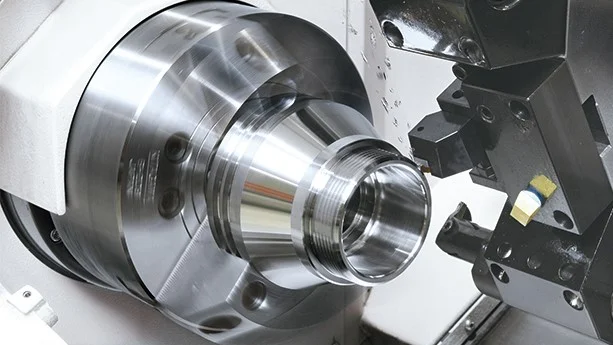
Limitations of Rapid CNC Machined Prototypes
Rapid CNC machining has many advantages, but it also has some limitations.
CNC machining rapid prototypes have geometrical limitations.
CNC rapid prototyping cannot make complicated geometrical shapes prototypes with complicated internal components, because it works from outside in. Other rapid prototyping techniques, such as additive manufacturing, work from the inside out, making them ideal for creating internal geometries.
CNC rapid prototyping is subtractive manufacturing, while 3D printing is additive manufacturing. In this aspect, CNC machining tends to have more material waste.
CNC prototype machines investment is high.
CNC machines all have relatively high costs. There are many types of CNC prototyping machines, for example, CNC milling machining, CNC lathe, CNC turning-milling machine, CNC laser machine. The starting price of the machines mentioned above is typically $20,000 to $30,000 or more. The high investment costs can be a significant limitation, especially for smaller businesses. The investment for CNC machines and related tech can be pretty high, especially for smaller businesses. It can make them think twice before the investment.
CNC machined processing prototype cost is high compared with 3d printing prototypes.
With a 3D printing prototype, the price is based on the prototype’s weight. The raw material costs for CNC machining are generally lower, especially for complex CNC components. The cost of machining details can be much higher. Typically, the price is worth it in these cases because CNC prototypes offer higher precision and accuracy.
Prototyping CNC machining needs higher technical challenges.
CNC prototype machining needs specialized technical skills. Creating CAD files and operating CNC machines need technicians with essential skills. CNC prototype machining requires an understanding of testing procedures, innovative approaches, experience, and a creative vision. Thus, not every manufacturer engaging in CNC machining can produce promising CNC prototypes. We recommend outsourcing CNC prototype machining jobs to experts like ECOREPRAP, who have years of experience in the prototyping industry.
CNC machining is a subtractive manufacturing process, resulting in material waste.
CNC machining removes material from the workpiece during the prototyping or production, making it a subtractive manufacturing process. Secondary recycling is possible for metal prototype materials such as aluminum and stainless steel. However, for prototype plastics like acrylic, ABS, etc., the generated chips are mostly discarded, which is unfriendly to the environment.
We can see that CNC rapid prototyping and 3D rapid prototyping have different advantages. With 3d printing technology, we can create lightweight prototypes for display purposes because you can leave the internal cavity hollow. For rapid prototyping with high precision and strength requirements, CNC machining will be preferred.

What are the applications of CNC machining prototyping?
Prototyping CNC machining is important across many industries, ensuring the research, development, and validation of functional prototypes before full-scale production.
Many industries can benefit from CNC machined processing prototype parts. Below are the well-known common industries that use CNC machined prototypes.
Medical industry
Precision and reliability are the keys to medical equipment. Prototype CNC machining enables precision medical parts like implants, MRI machines, orthotic devices, and other equipment. These medical prototypes must undergo rigorous testing before entering the market to ensure they meet medically necessary standards for safety and effectiveness.
CNC prototype machining also provides the medical industry with parts made from both metal and plastics. Prototypes made in 316 stainless steel and titanium are commonly used for medical metal parts. Plastic prototypes made of transparent materials like acrylic and polycarbonate are used more in medical plastic parts because they provide high transparency after vapor polish surface treatment.
CNC machining can provide the highest tolerance for medical functional prototypes, which other prototype technology can not match.
Military and Defense
Military parts need high precision and durability, and CNC machining provides a high-precision and reliable solution.
In the military industry, CNC rapid prototyping is commonly used to create precise and durable components for aircraft, communication systems, vehicles, and ammunition.
Due to its lightweight properties, Aluminum is frequently used to make military prototypes. Anodizing provides more color choices. Some plastic parts, like ABS, are also used to make the aircraft less heavy.
When producing prototypes for the military sector using CNC, it’s crucial to seek out manufacturers with firearm production licenses.
Aerospace Industry
In the aerospace industry, precision and durability are paramount for components that withstand extreme conditions. CNC prototype machining is employed to craft landing gear ports, airfoils, and manifolds.
CNC prototyping is suitable for the aerospace industry for two reasons. First, CNC machining can produce parts with exceptional precision and accuracy. Second, CNC machining assesses these parts’ performance, ensuring they perform reliably when integrated into aircraft systems.
Automobile Manufacturing
CNC prototype machining stands out as the perfect method for making automotive prototypes. In automotive manufacturing, components such as gears demand precision engineering with exceptionally tight tolerances. With CNC prototype machining, automakers can precisely make prototypes to meet exact specifications and rigorously test them for suitability.
CNC can provide automotive and motorcycle customization and improve vehicles’ performance and aesthetics. CNC machining has been used to make custom parts such as body panels and grilles. These parts can be uniquely designed and precisely manufactured to meet the specific requirements of the vehicle owner.
Additionally, CNC machining allows for producing performance-enhancing components such as intake manifolds and exhaust headers. These engineered parts can improve power output, handling, and driving experience.
In motorcycle customization, CNC machining makes parts like handlebars and brake levers more customized, matching the rider’s style, comfort, and performance preferences.
CNC machining also enables the production of aftermarket components such as performance exhaust systems, swingarm extensions, and custom wheels, allowing riders to personalize their motorcycles for aesthetic appeal and improved performance.
CNC machining is also essential for E-bike research and production. CNC machining makes E-bike structural elements, like frame tubes, brackets, and drivetrain components, like chainrings, cranksets, and freewheels.
Oil & Energy Industry
The parts in the Oil & Energy Industry have a high demand for physical strength, which must withstand extreme depths. CNC machining has produced parts like drill bits, pump components like impellers, housing and shafts, valves, and fitting, and turbine components like blades and casings.
Prototype CNC machining allows manufacturers across industries to refine designs, test functionality, and confirm performance before mass production. It will reduce the time to market and ensure the final products meeting performance, safety, and dependability standards.

How to make CNC machining prototypes?
CNC rapid prototyping is widely used to create both dummy and functional prototypes. It is also called as CNC-RP. There are step-by-step processes to make CNC machining prototypes.
Step 1: Design Idea
The initial step involves generating multiple design concepts for the product. These ideas may include dimensions, feature positions, design for manufacturing and assembly (DFMA), and design for testing (DFT). Efficient designs are selected to proceed to the next phase.
Step 2: Generation of 3D Files
Selected designs are converted into 3D files, typically CAD designs, which define the final product’s dimensions, features, and aesthetic specifications.
Step 3: Identification of Production Sequence
Next, the machining process for each feature is identified, along with the sequence of manufacturing steps required to produce the prototype using CNC machining. CNC routing, turning, cutting, milling, and drilling may be involved.
Ste4: CNC Programming
The CNC machine is given instructions through a CNC program, including G-codes and M-codes, which dictate tool selection, travel time, feed rate, cutting depth, etc. These instructions automate the CNC rapid prototyping process based on production requirements.
Step 5: Production (Prototyping)
Once the CNC program is prepared, it is loaded into the CNC machine’s control panel. The CNC machine then performs the machining processes and makes the prototypes.
Step 6: Testing
The final step involves rigorous testing of the CNC prototype to evaluate functionality, detect defects, assess durability, and overall performance. If the prototype meets requirements, then we can go to mass production. Otherwise, alternative designs are considered and prototyped using CNC machining.
After product experts have tested and given their approval for the CNC prototype, it moves forward to production. If the prototype doesn’t meet the original requirements, the next best design idea is selected, CNC machined, and tested for the same criteria.
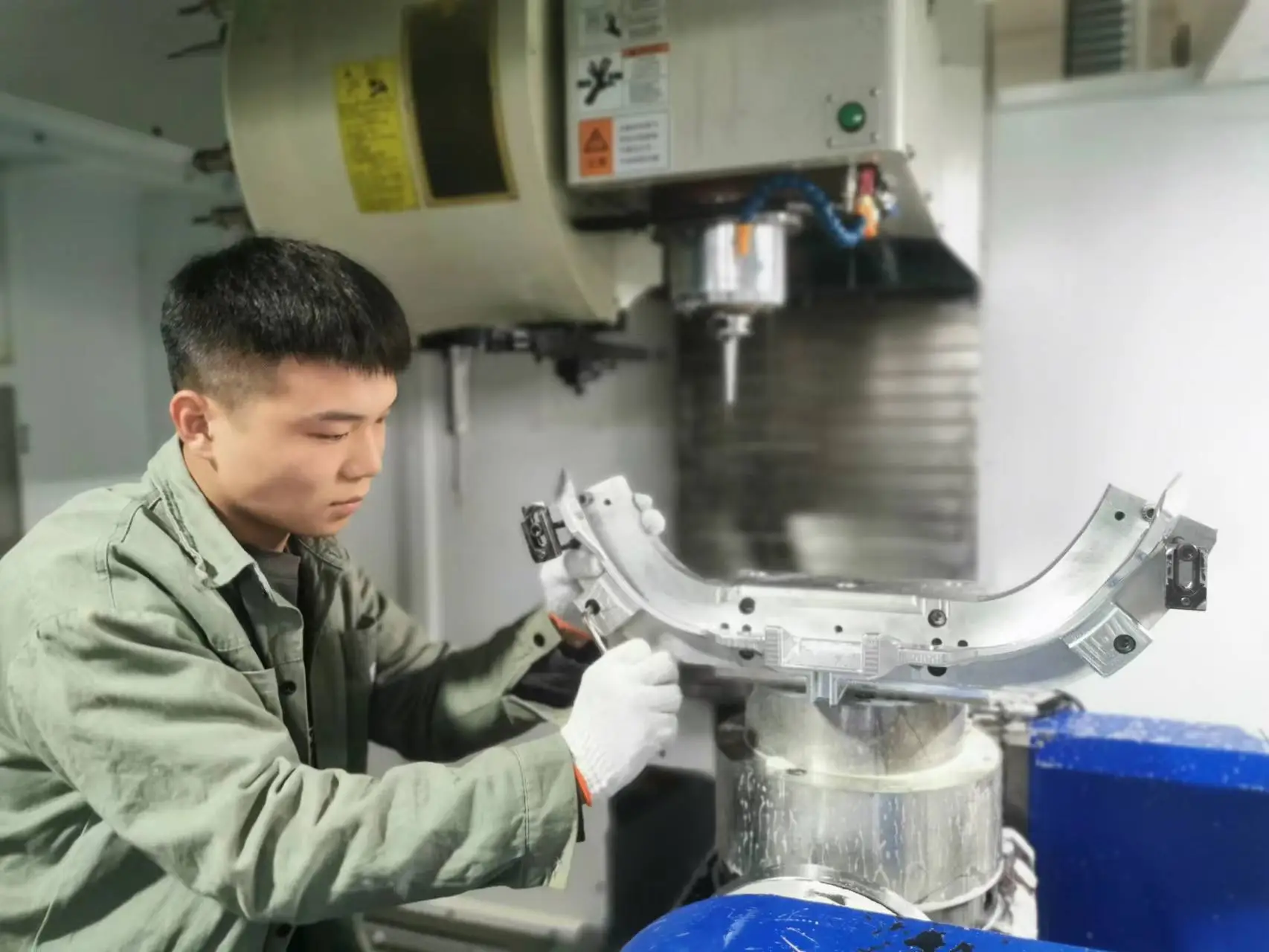
What materials are used in the CNC prototype?
CNC machining prototypes can be classified into CNC-machined plastic and metal prototypes. Below is the table showing the materials used in CNC machining prototyping.
| CNC machined plastic prototype | Advantages |
| ABS prototype | Excellent impact resistance and surface finish |
| Polycarbonate (PC) prototype | High strength, transparency, and heat resistance |
| Polypropylene (PP) prototype | Lightweight with good chemical resistance |
| Acrylic (PMMA) prototype | Transparency, UV resistance, and ease of machining |
| Nylon prototype | High strength, abrasion resistance, and flexibility |
| POM (Delrin) prototype | Low friction, excellent dimensional stability, and chemical resistance |
| PE prototype | Good chemical resistance and low moisture absorption |
| PEEK prototype | High temperature resistance, mechanical strength, and chemical resistance |
| PTFE prototype | Low friction, chemical resistance, and non-stick properties |
| PET prototype | Good dimensional stability, clarity, and chemical resistance |
| PPS prototype | High temperature resistance, chemical resistance, and dimensional stability |
| PVC prototype | Good chemical resistance, electrical insulation, and ease of machining |
| PU prototype | Versatile, with options for varying hardness and flexibility |
| PPSU prototype | Excellent heat resistance, toughness, and chemical resistance |
| HIPS prototype | Good dimensional stability and ease of processing |
| Bakelite prototype | High strength, electrical insulation, and heat resistance |
| FR4 prototype | Flame retardant, electrical insulation, and mechanical strength (used in PCBs) |
| G-10 prototype | High mechanical strength and electrical insulation (used in electronics) |
| Carbon Fiber prototype | Exceptional strength-to-weight ratio and stiffness |
| PEI prototype | High temperature resistance, dimensional stability, and chemical resistance |
| CNC machined metal prototype | Advantages |
| Aluminum prototype | Lightweight, corrosion-resistant, and excellent machinability |
| Steel prototype | High strength, durability, and suitability for various applications |
| Stainless Steel prototype | Corrosion resistance, high strength, and hygiene properties |
| Brass prototype | Excellent machinability, corrosion resistance, and aesthetic appeal |
| Copper prototype | High electrical and thermal conductivity, along with antimicrobial properties |
| Bronze prototype | Good wear resistance, strength, and corrosion resistance |
| Titanium prototype | High strength-to-weight ratio, corrosion resistance, and biocompatibility |
| Magnesium prototype | Lightweight, high strength-to-weight ratio, and good machinability |
| Zinc prototype | Good corrosion resistance, low melting point, and excellent casting properties |
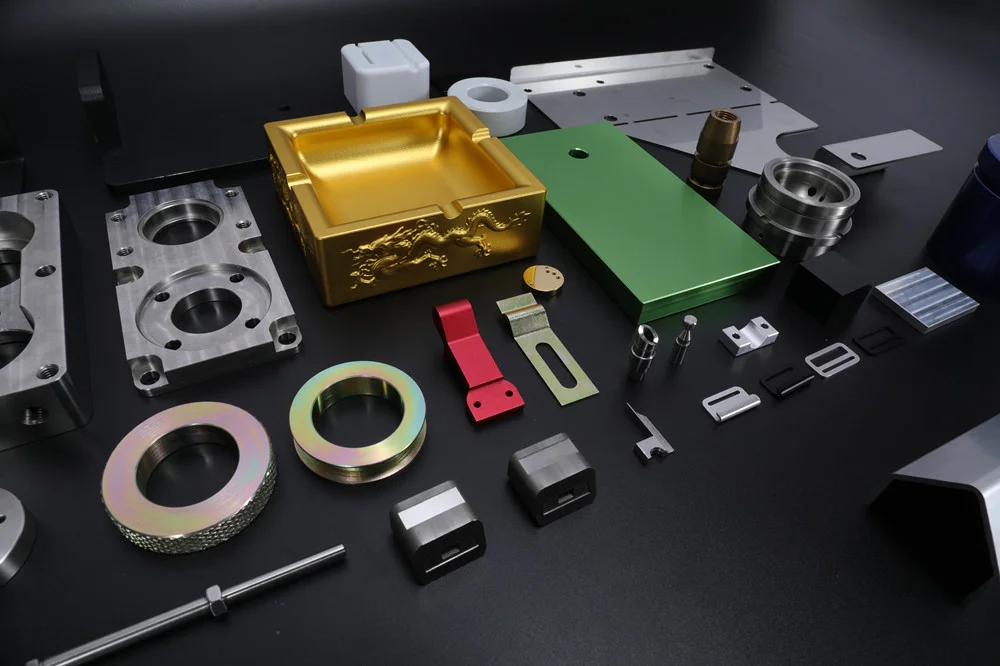
Types Of CNC Machines Used For Prototyping
There are different CNC machines for making prototypes. Let’s introduce one by one.
CNC turning machine for prototyping
CNC turning machines, or rotating machines, produce cylindrical or rotational symmetry prototypes. Typical turning prototyping parts include shafts, pins, and bushings.
Compared with traditional lathes, CNC turning machines, or CNC lathes, have many advantages for prototyping. CNC lathe will ensure a high-quality prototype with precise dimensions and shapes. It is better to handle complicated parts, and the machining speed and efficiency are significantly improved.
Since the machining process is entirely controlled by a computer, each prototype can be produced identically, ensuring consistency and reproduction. It is also easy to change the machining process by changing the programs.
Whenever the prototype is with a rounded shape, consider turning prototyping first.
CNC milling machine for prototyping
CNC milling is more common for rapid prototyping. CNC mills use cutting tools to cut materials from metal or plastic plates and get desired prototypes with different geometries.
The prototypes made via CNC milling are the following shapes:
Parts with flat shapes like flat profiles, concave and convex surfaces, and flat holes.
Parts with complicated structures like curves, arcs, and intricate geometric shapes.
Holes and slots like straight holes, threaded holes, and keyways.
Three-dimensional shapes like cubes, cylinders, and cones.
In the past, 3 3-axis CNC machines were more frequently used to process prototypes. To make complex shapes, we may need multiple clamping operations.
Nowadays, 4-axis and 5-axis machines become more popular since they need fewer clamping operations and even completing the machining in one clamping. This will reduce precision errors and tolerance, resulting in accurate dimensions for the machined prototypes.
Germany and Japan also have 6 and 7-axis CNC machining. With increasing axes on the CNC machine, it will have more capability to machine complicated parts and get tighter tolerance. Due to the high cost of the machine and machining cost, it is still rare in China.
The complicated prototype may need milling and turning, which is very common in production.
Machining prototyping by CNC milling-turning center
A CNC milling-turning machine combines both milling and turning operations. Without transferring between different machines, it can offer efficiency and versatility in prototype manufacturing by enabling complex parts to be produced with both rotational and linear features in a single setup.
Prototyping with a CNC router
A CNC router is like a CNC mill, but producing machined parts in plastic, wood, and soft metals like aluminum is more frequent.
Compared with a CNC mill, a CNC router price is cheaper and usually has three axes. Though they are not good at providing precision parts, they are easy to handle and money-saving.
Prototyping with CNC laser cutter
Laser cutting can be considered if the prototypes are consistent in thickness. It offers fast speed and wide materials selection. Especially for small-volume prototypes with no tight tolerance, laser cutting provides a relatively low cost.
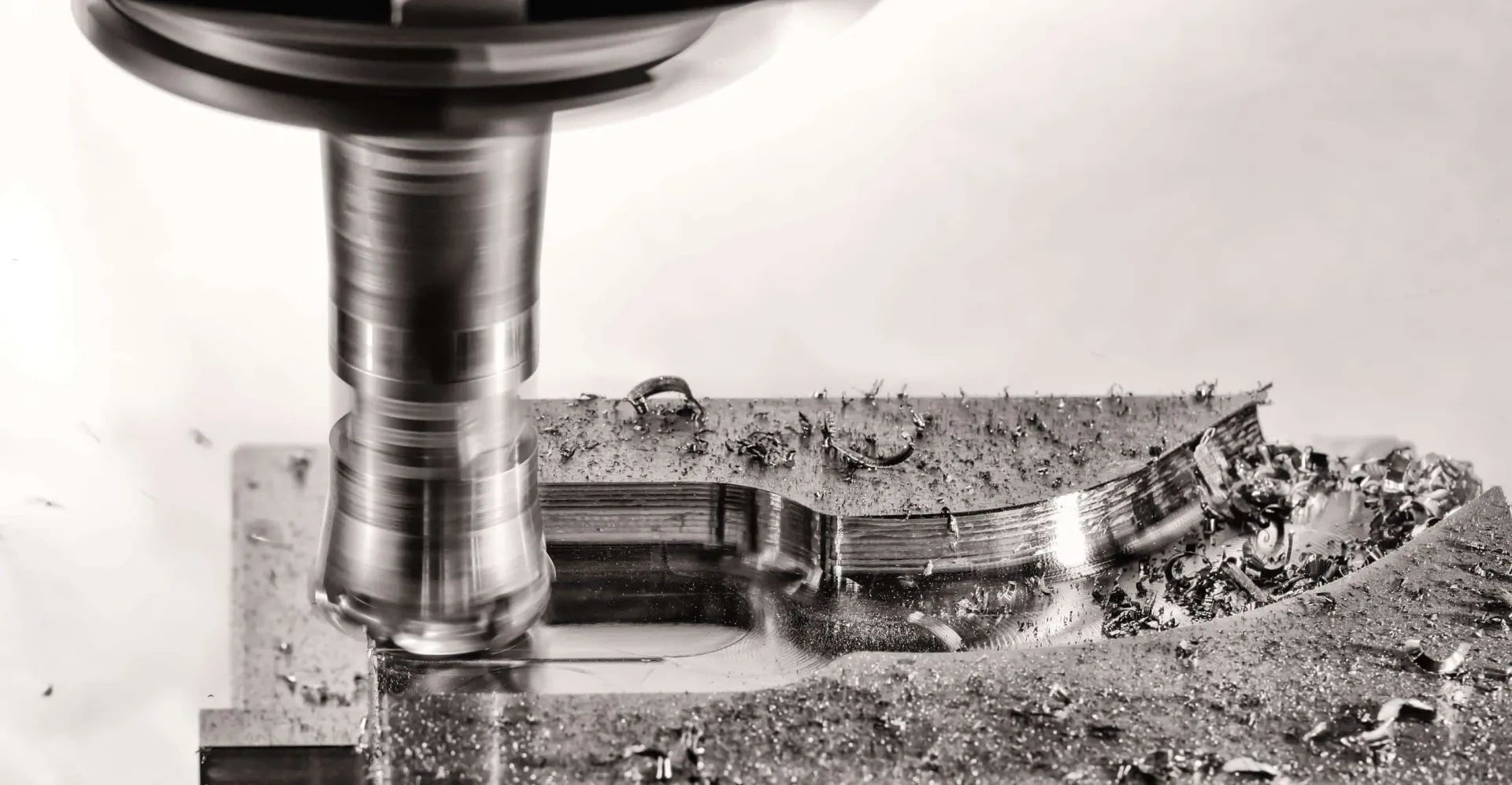

Which is better for prototyping? CNC machining versus 3D printing?
Both 3d printing and CNC machining are pretty commonly used for rapid prototyping. There are some factors to consider when deciding which is better for your prototype projects.
Prototype Materials
Currently, 3d printing technology and additive manufacturing can provide limited material choices, like SLA resin, PLA, PETG, ABS, Nylon, aluminum, and stainless steel. At the same time, CNC machining provides much broader materials selections and prototypes in plastics and metals.
At ECOREPRAP, we have experience machining over 20 plastics and over 50 metals.
Prototype Design
There is one advantage of 3D printing that CNC machining can not compete with. Whatever the design is, 3d printing can make it. If the internal structure of a prototype design contains areas that CNC tools can not reach, then the part can not be machined via CNC. Additionally, some extremely thin or long structures are prone to break or chatter during machining; it is also impractical to make them via CNC.
Prototype Tolerance
When we talk about prototype tolerance, we shall first consider the purpose of the prototype. Is it for appearance or function test? The general tolerance for CNC machined metal and plastic prototypes is ISO 2768MK, ±0.1 mm. Meanwhile, for 3D printing, the tolerance is much coarser.
Prototype Cost
Generally speaking, prototyping via 3d printing is cheaper than CNC machining prototyping. But considering the precision, it is worth it.
So, which is better for prototyping? It is related to your project specific. Consider material, design, tolerance, and cost, and you can also check with customized CNC machining prototype service and get their professional suggestion.
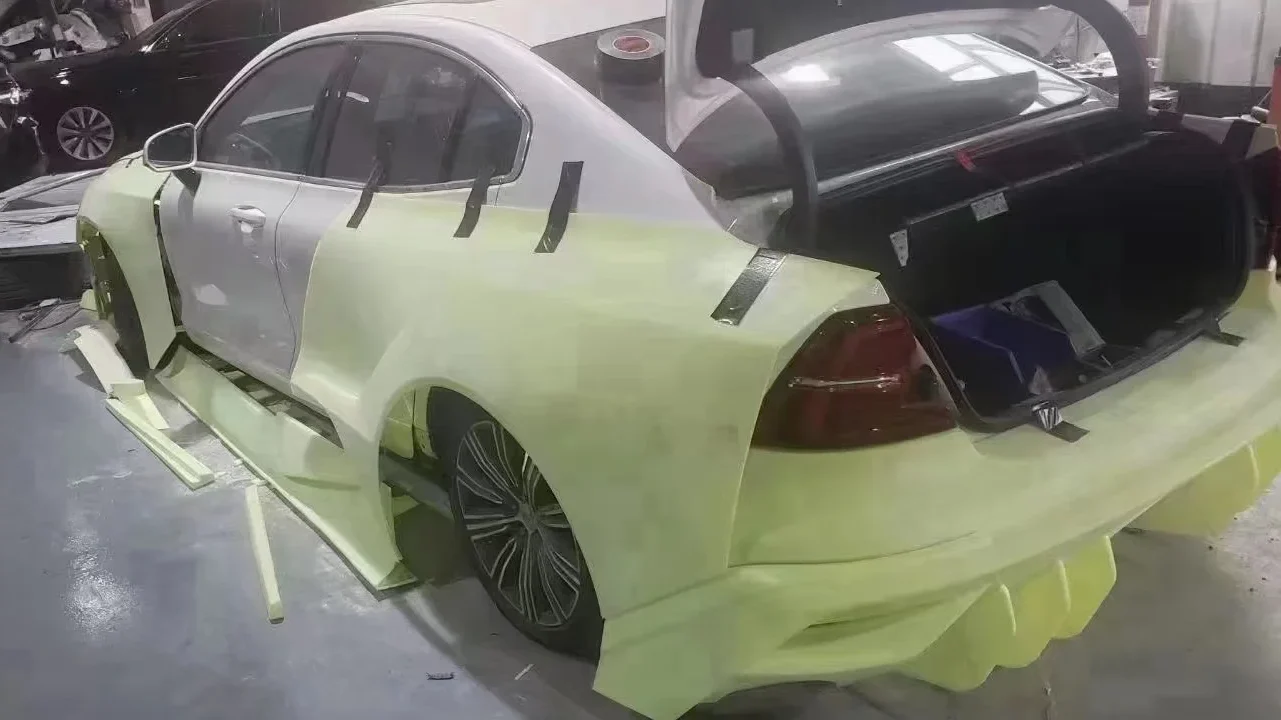
5 Tips for making prototypes via CNC machining
As a popular option for making rapid prototypes, below are 10 useful tips for prototyping via CNC machining.
Provide quality CAD models for prototype manufacturing.
The CAD files used for CNC machined prototyping are crucial to the final part quality because the file gives information about the visual information and expresses the parts’ critical dimensions. Prototypes with excellent quality need a high-quality model. Check the helpful 5 tips below.
Tip 1: Optimize the design
It is crucial to consider the elements such as holes, cavities, undercuts, and inner radius for CNC machining. For example, the max. The cutting depth of end milling is three times the diameter of the tool. We need to consider the depth of the cavities when designing.
Tip 2: Increase wall thickness
If the wall thickness is too thin, there will be chattering and distortion, making the machining a failure of the CNC custom parts. As a general rule, the wall thickness of plastic prototypes is over 1.5mm, while the wall thickness of metal prototypes is over 0.8mm.
Tip 3: Choosing the right CAD software
For different industries, the CAD software for custom prototypes may vary. Some are complicated, some are simple. What suits one industry may not necessarily be suitable for another.
Choose the right CAS software for your application. The CAS software for CNC machining and for sheet metal forming are different. Find the one suits your particular prototype manufacturing.
Tip 4: Creating a checklist
Having an initial checklist of the designs and features you desire in prototypes is crucial. It’s easier to incorporate features during the CAD file design phase than attempting to modify the file later on.
Tip 5: Simplify drawings
There are various methods to create a CAD design for the same prototype. Keeping drawings simple helps minimize unnecessary machining steps. For complex parts, it’s advisable to split the drawing into two separate parts that can be assembled later.
Make the prototype design simple.
Although a complex design might seem appealing, it is often impractical. In CNC prototyping, complexity means higher machining costs and more machining time. Moreover, setting up the machining for complicated designs with multiple angles and undercuts is time-consuming, leading to a longer development period.
Thus, consider which features are necessary before submitting a prototype. Discard the unessential ones to keep the cost down.
Design with tool geometry in mind.
Tool rotation is an essential factor to consider during CNC machining. Many cutting tools are cylindrical with a limited cutting length, meaning the tool’s shape will influence all cutting operations.
Consequently, internal corners and other features will have a radius with larger radii resulting in quicker machine times. Additionally, internal features may require extra or more intricate machining if the design of the cutting tools isn’t considered in the part’s design.
For instance, if the team aims to validate a part’s external mating features, they might skip machining the internal features and focus solely on the exterior. While CNC lathe rapid prototyping, which involves rotating the workpiece rather than the cutting tools, is perfect for creating screws and doorknobs, it’s less suitable for non-axisymmetric parts.
Most of the cutting tools are round and have limited cutting lengths. Thus, we shall never forget that the tool geometry affects the cutting operations.
Use CNC machining general tolerances.
General tolerance, or default tolerance, is the recommended tolerance for CNC machining. We may need specialized cutting tools, careful machining, and more jigs or fixtures for a tighter tolerance. Tight tolerance usually means more machining time and slower speed, thus increasing the machining cost.
When tight tolerance is needed for CNC machining prototypes, check with the skilled manufacturers and get their opinions.
Increase prototype quantity.
You may find the cost for one-piece prototypes is relatively high because of the machine setup, and the programming cost is no significant difference for one-off and high volumes. Another reason we should consider it if the part fails is that we need to make a new prototype. The remake cost is high. With high volume, the average remake cost is low.
Generally speaking, whether CNC plastic prototypes or CNC metal prototypes, the unit price will decrease with the increasing quantity. Quite often, the per unit price will decrease dramatically with increased production volume.
On the other hand, when producing just one prototype, we might find that the impact of changing materials on its price isn’t significant. This is because the cost of raw materials is negligible compared to the machining expenses.
Use an Experienced CNC Prototype Manufacturer.
When choosing the CNC prototype machining manufacturer, it is very important to select an experienced one. A professional prototype CNC machining manufacturer with skilled technicians and advanced CNC machines. They are better at providing prototypes with precision and consistency. With an experienced CNC manufacturer, you can get the prototypes quickly.

How to choose a reliable prototype CNC machining manufacturer?
When you have decided to go with CNC machining for your prototype projects, the next step is to select a reliable CNC machining prototype supplier. Choosing a good one can make your prototype within tolerance and get it on time. Below are some considerations about how to find the right one.
Machining experience
A machine shop with machining experience in plastic prototypes may know how to avoid thermal expansion. Factories with aluminum machining experience are better at avoiding collisions and getting a better surface finish. CNC machine shops with rich steel experience are good at heat treatment because many steels need heat treatment to improve hardness.
Talk with the supplier about the material you want to make for your prototype and point out the critical dimensions of the parts. An experienced factory will make your prototypes easily and quickly.
Quality check report
Professional prototype CNC machining manufacturers can provide inspection reports for every part in the order. There are a lot of professional inspection tools in CNC machining shops, for example, micrometer, caliper, -height gauge, depth gauge, coordinate measuring machine (CMM), surface roughness tester, hardness tester, and others.
Tell the supplier you need a formal inspection report for all the dimensions in 2d.
Top class equipment
Ask your CNC supplier to provide the equipment list. You can estimate the machining capabilities and production capacity by examining the brand, machining distances, equipment age, and other factors.
Top-of-the-line machines like 5-axis milling mills can produce parts with better tolerance.
Material certification
The right material is the first step to a successful CNC prototype. By requesting a material certificate from the supplier, you can ensure the prototype is machined using your required material.
Machining process and cost
A reliable CNC machining prototype company can provide design for manufacturing feedback. Also, provide suggestions about how to reduce the cost without affecting the application. Use fillet instead of a sharp inner corner, for example.
Surface treatment
Whether it is a 3d printed prototype or a CNC machined prototype, we may need surface treatment to improve its surface aesthetics or wear resistance. Take powder coating for instance, the thickness will effect the final product dimension.
Experienced CNC machining factories will consider the impact of powder coating on dimensions during CNC machining and make allowances. So, the dimensions after powder coating fall within the tolerance range. We have noticed that some machining factories claim they can only guarantee dimensions before powder coating.
For steel parts with heat treatment, an experienced CNC machining can decide on the heat treatment method and whether it is necessary to make allowances during machining. After vacuum heat treatment, the workpiece’s surface may become blackened. Additional fine machining may be required to reach the requested surface finish.
For parts with tight tolerance and surface finish, it is even more essential to choose an experienced machining factory.
Prototype CNC machining services near me or prototype CNC machining online
With a local prototype CNC machining service, we can benefit from easier communication and the ability to visit the facility in person if needed. It will also guarantee financial security.
However, there are advantages to making prototypes online.
Online CNC machining services are very convenient now. Companies with good reputations now provide design assistance, fast quotations, order tracking, and English communication services.
The labor costs of developed countries are much higher than in China, so choosing Chinese manufacturing for prototypes can save you a lot of money. Besides, Chinese workers are hard-working; they often work overtime, and you can get your prototypes much faster.
However, when choosing an online CNC machining service, it’s essential to consider factors such as the provider’s reputation, capabilities, lead times, shipping options, and customer support. Additionally, ask them to provide the client’s contact phone number, call him, and ask for their opinions. Then make a final decision.
Regardless of the type of CNC machining services you select, ECOREPRAP can make it better and faster and supply quality machined parts with the inspection report provided. Send us the drawings and get a professional DFM and quotation now.

Let's get your projects started, together!
Get custom parts machined in high quality, delivery on time.






